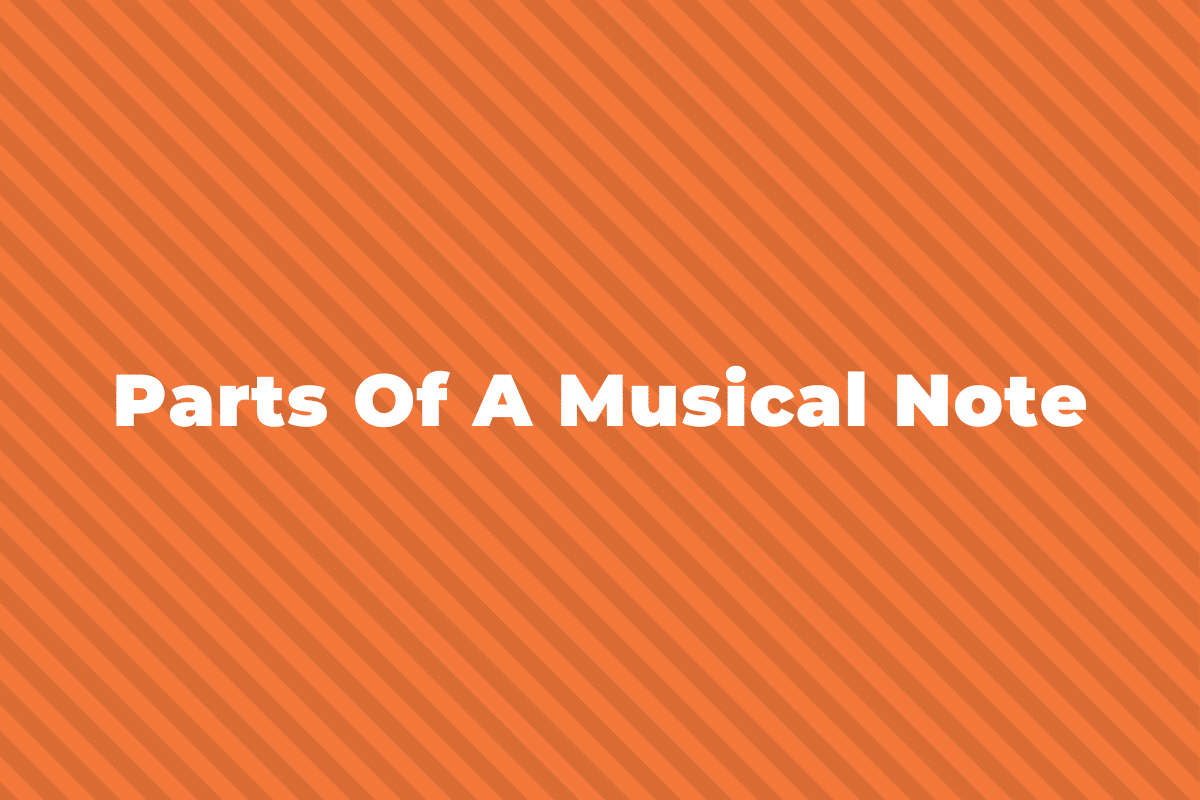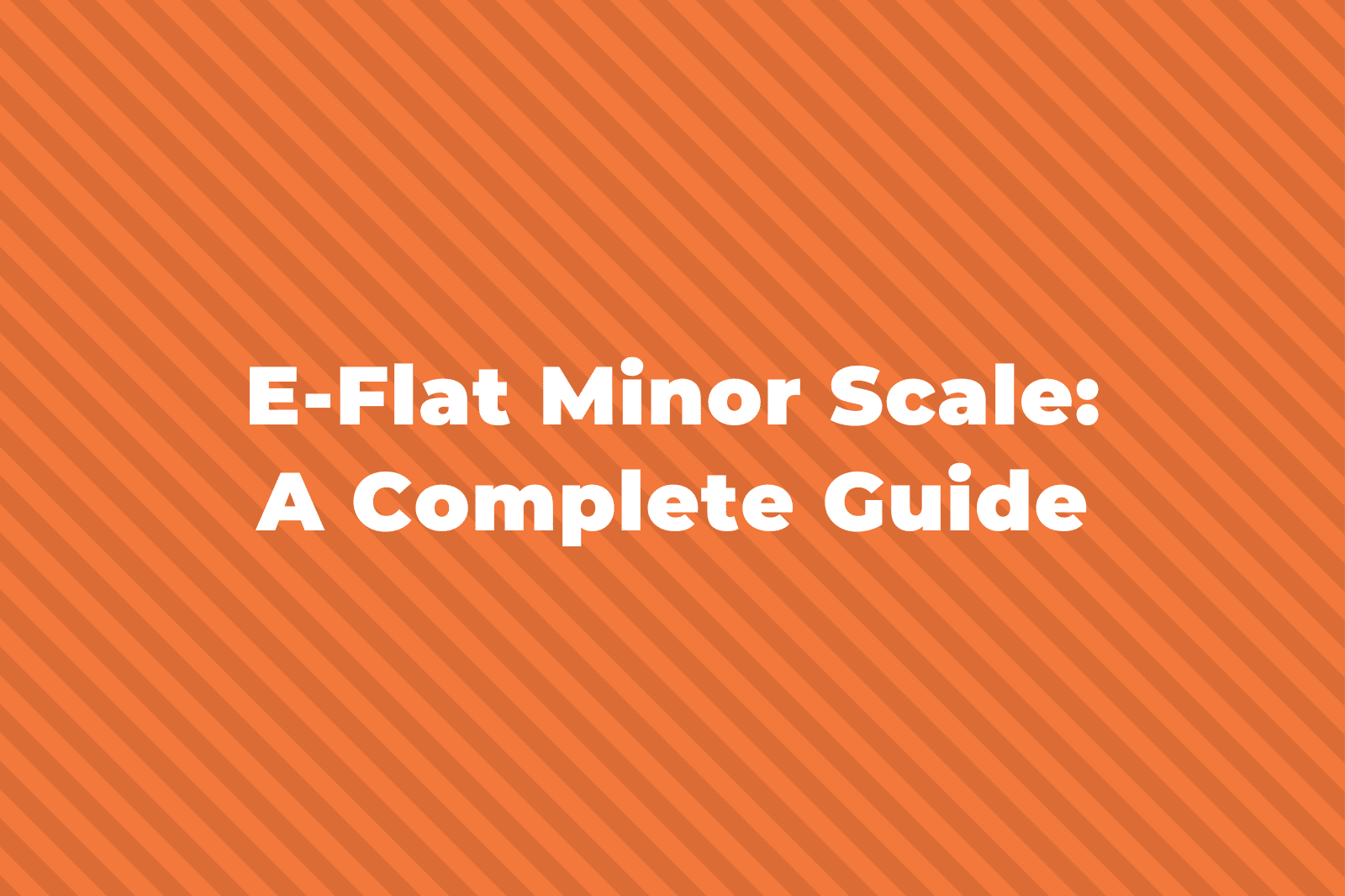Music in a lot of ways is like a spoken language. It has grammar and syntax rules that make it more interesting and easier to follow. It also has different structural units, just like language has words, sentences, paragraphs, etc. One of those units is called a Phrase.
This article will teach you everything you need to know about phrases in music and their uses.
Musical Phrase: Definition
If music is like language, then a single note, or pitch, is like a letter.
You can combine them to make words (intervals and chords) and then combine these letters or words to make sentences.
A sentence in music would be the equivalent of a phrase.
A phrase is a single unit of music that makes complete musical sense when heard on its own.
It is most notably heard as a melody and it is made up of smaller units, like motifs, cells, or individual notes.
The idea that a phrase “makes sense” musically means that you can notice a beginning, middle, and end of the phrase, and that you can distinguish it from other musical phrases around it.
Commonly, especially in Classical music, phrases are four bars long, and they typically end with a cadence.
These rules are not set in place, however, and phrases can be longer or shorter than that.
The basic rule is that phrases should be able to be taken as a single entity that is separate from the rest of the melody around it.
Let’s take the opening eight bars from Beethoven’s “Fur Elise” as an obvious example of a two-phrase section.
It starts at the beginning of the piece (with a pick-up measure of one beat), and ends at the repeat sign.
There are two phrases in this section: the first phrase goes from bar 1 to the beginning of bar 4, where the right-hand piano part ends on a C.
This is shown by the blue lines, anything within the blue lines is Phrase 1.
The second phrase is within the green lines.
It goes from the second half of bar 4 to the repeat sign, ending on the note A, which is the tonic note of the piece.
Both Phrase 1 and Phrase 2 end with a cadence – they go from the V chord (E Maj in this case) to the I chord (A min).
Both phrases are 4 bars long, and they both start with the same melody in the upper part of the staff.
Here is an example of two phrases that are each two bars long instead of four, from the opening of Mozart’s “Piano Sonata in C Major”.
Multiple phrases in a row are called a phrase-group if they all have similar styles and harmonies.
Starting the Phrase on the Upbeat
In a musical bar there are usually 2, 3, 4, 6, 9 or 12 beats with the exception of some odd time signatures that might have 5, 7 or 11 beats per bar.
The first beat of the bar is called the downbeat, and the final beat of the bar (whether it’s beat 4 or beat 6, etc.) is always called the upbeat. – More on this in our post about syncopation here.
When we start a phrase of music on the upbeat (or before), those beats of melody are called the anacrusis.
It is also sometimes called a pickup, when the melody starts playing before the harmony or accompanying material.
Here is a very famous example, the “Happy Birthday” song.
Notice how the word “Happy” starts at the end of the first bar (anacrusis), and the “Birthday” falls on the start (downbeat) of the second bar.
Here is another example, “Yellow Submarine” by The Beatles.
Each phrase starts with an anacrusis, and you can hear this by listening to how the vocals come in one beat before the guitar in each phrase.
The words “In the…”, “Lived a…” “And he…”, and “In the…” are the starts of the four phrases in the first verse.
Antecedent and Consequent Phrases
The two phrases in “Fur Elise” above are also perfect examples of Antecedent and Consequent phrases.
The word antecedent means “before”, and the word consequent means “after” so antecedent – consequent phrases are when you have two phrases back to back.
An antecedent – consequent phrase is an example of a “phrase-group”.
The first phrase – the antecedent – usually ends either with a half cadence (meaning it ends on the V chord and not the tonic) or an imperfect cadence (meaning it ends on the tonic but not very strongly).
The second phrase, or the consequent, usually starts with a restatement of the opening musical material of the antecedent phrase, but it ends on a stronger, perfect cadence (meaning it ends on the I tonic chord with a strong V – I motion).
Here is another example of an antecedent – consequent phrase structure.
It is from Mozart’s “Symphony No. 40 in G Minor”.
The antecedent phrase starts in G Minor (the I tonic of the piece) and ends with a move to the subdominant, C Minor.
The consequent phrase then starts on the C Minor, and then ends with a perfect cadence of D Major (V) to G Minor (I).
The same idea is found in the opening eight measures of the famous folk song “Greensleeves”.

The HC means half cadence in measure four at the end of phrase 1, or A.
The AC is an authentic cadence at the end of phrase 2, or A’.
Phrase Markings
In sheet music, you might sometimes see a long curved line that seems to connect a few, or many notes.
They look just like a slur line, and are used to indicate to the musician that the notes contained within are a phrase.
Slur markings, also known as legato, tell us that we should play the notes smoothly or connected.
If you were playing a woodwind instrument for example, you’d play the notes in a slur in one breath.
These slur lines are often used to mark phrases, and they can be helpful when it comes to knowing what notes to emphasize and which ones to smooth over.
It’s the opposite of staccato which means we should play the notes detached.
Slur markings and phrase markings tend to be used interchangeably but sometimes can be a little different.
For example, you could have notes that are staccato within a phrase of music.
Phrase markings tend to be a lot longer while legato markings tend to be shorter and focus on fewer notes.
Here is an example of a phrase marking, using the “Happy Birthday” example from before to mark the first line as a phrase.
Another example is an excerpt from Beethoven’s classic “Pathetique” Sonata.
There are multiple slur lines on this page alone, to show how Beethoven wanted someone to make note of the difference between all of the phrases in these bars.
If you are playing a wind or brass instrument (saxophone, clarinet, trumpet, etc.) or singing, these phrase markings tell you not to breathe in between the marked notes.
If you are playing an instrument that does not involve your breath (violin, piano, etc.), then the phrase marking tells you to blend one note to another.
Summing Up
When it comes to phrases in music, there are all different kinds.
Although they are normally four bars long, they can be two bars, or eight bars, or longer.
Just like sentences in writing, a phrase in music is however long or short it needs to be in order to get its meaning across.
We hope this post was able to help you understand where a phrase starts and where it stops, so now you can look at your own music or analyze a song from class and know what to look for.



